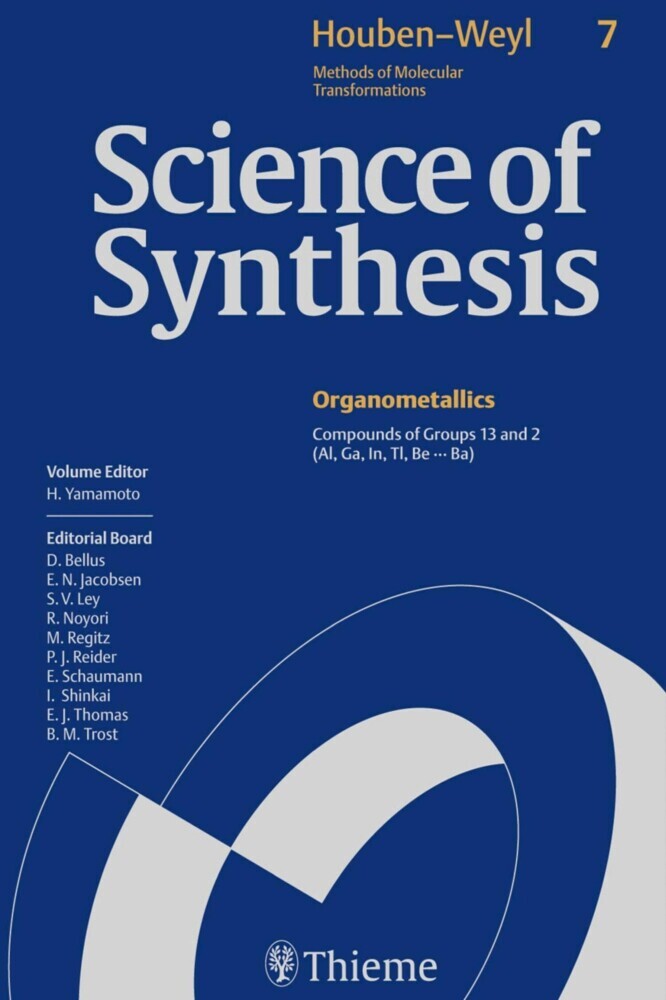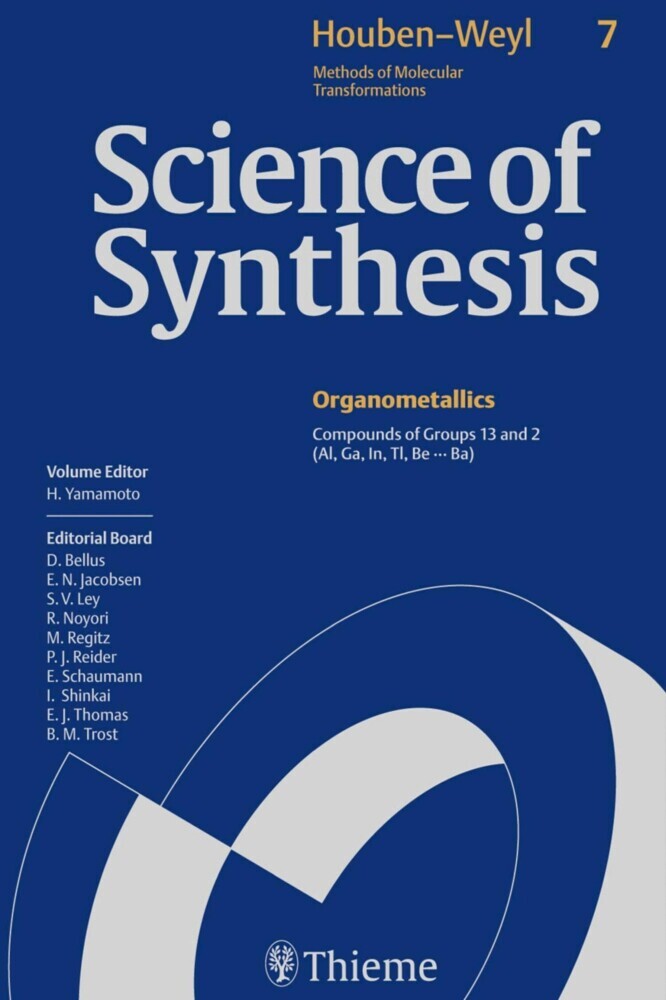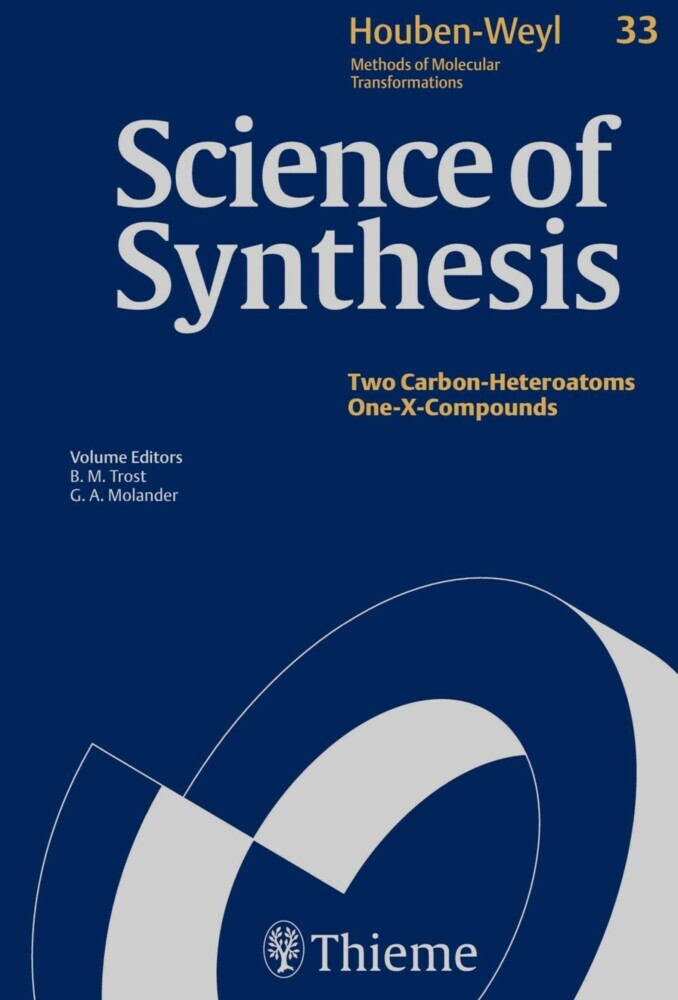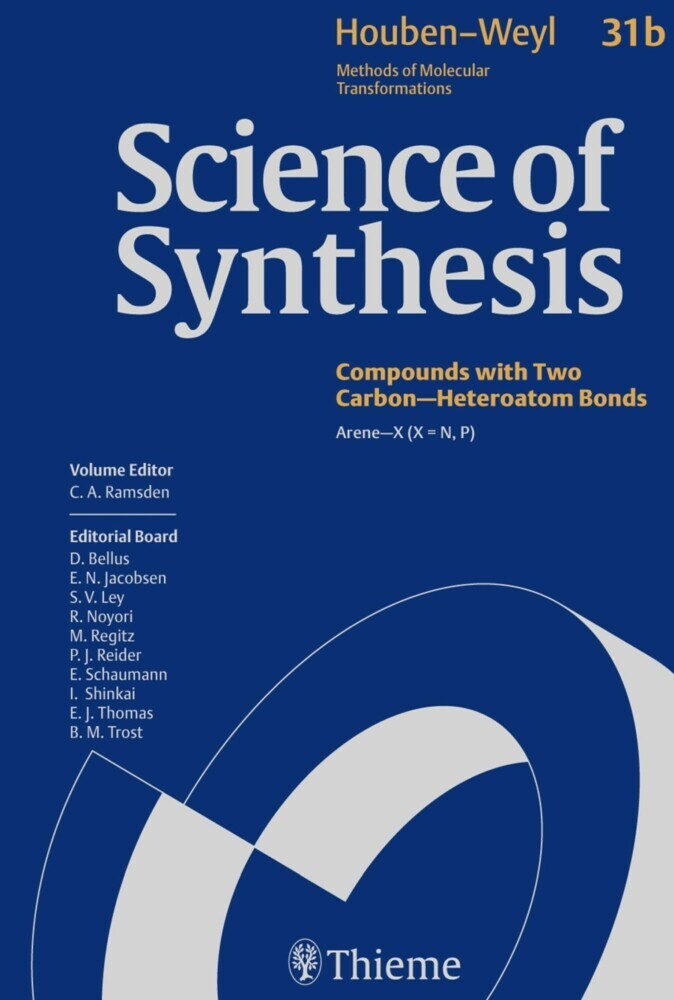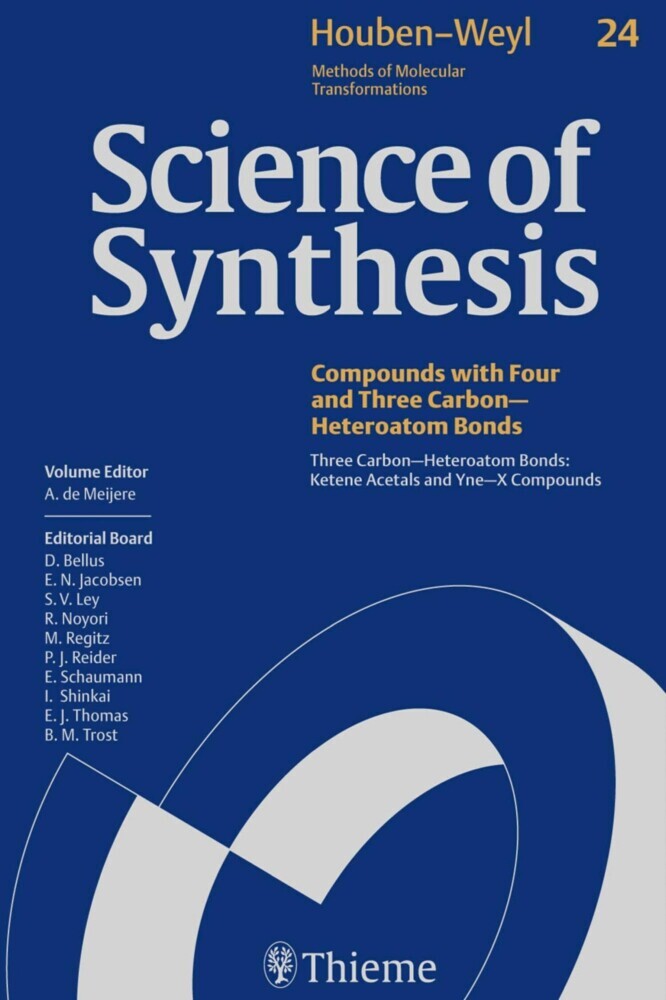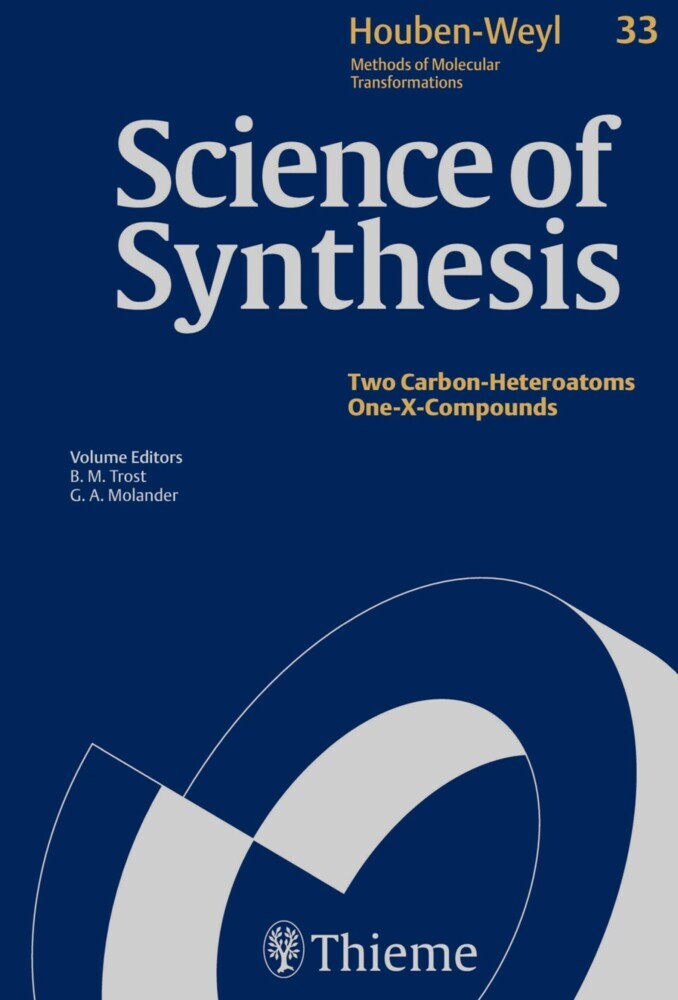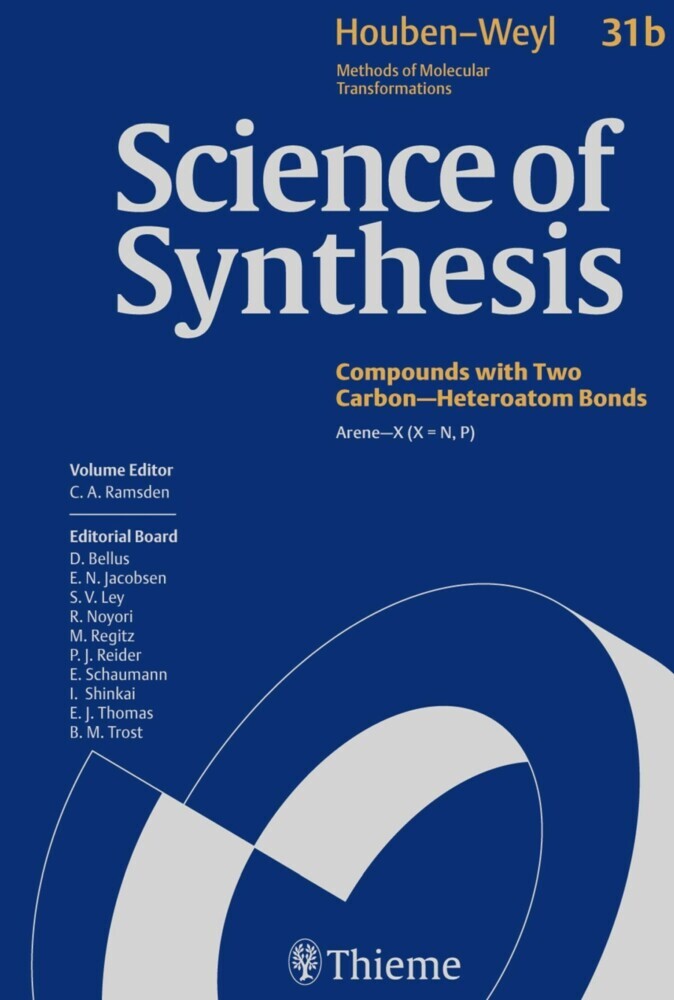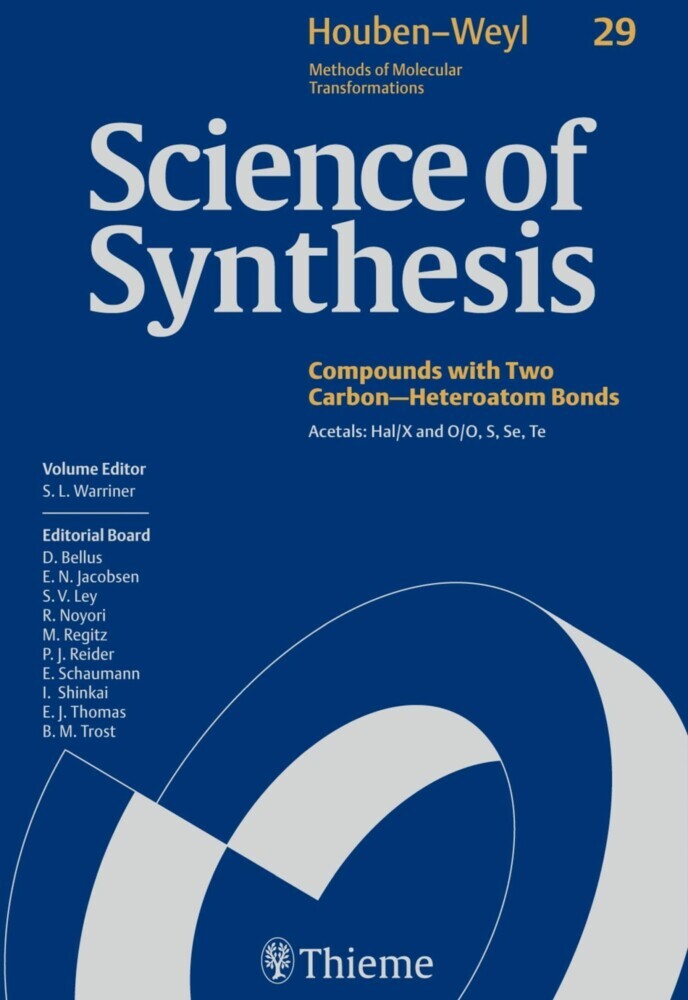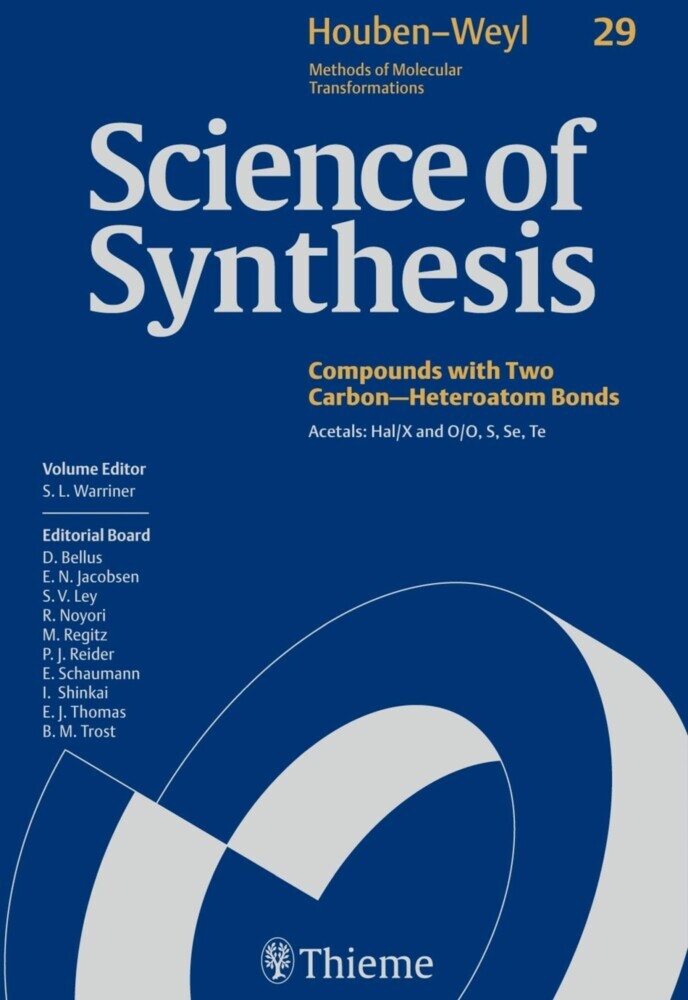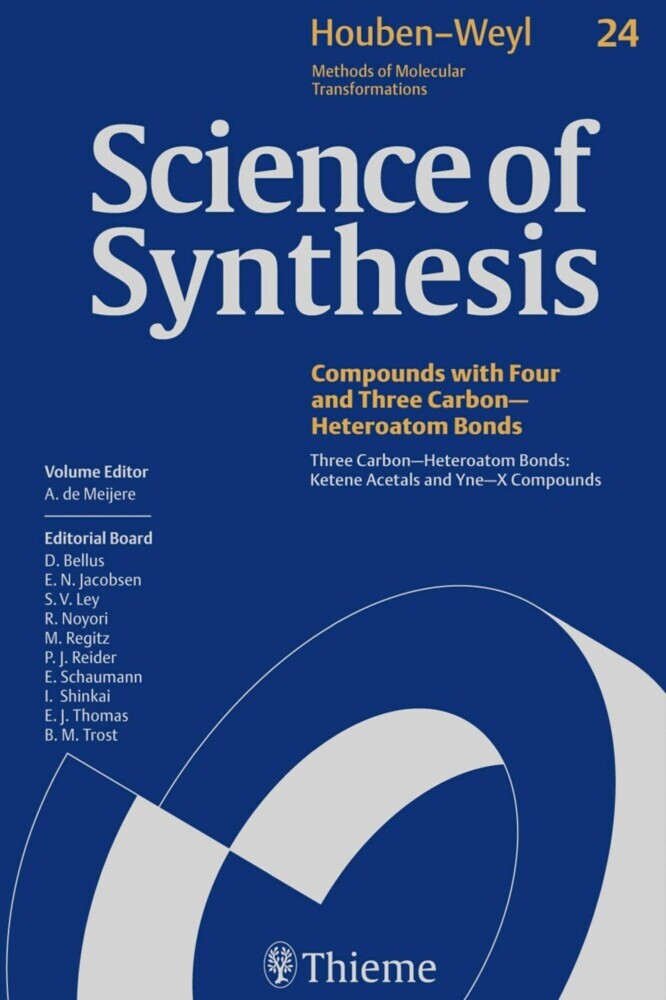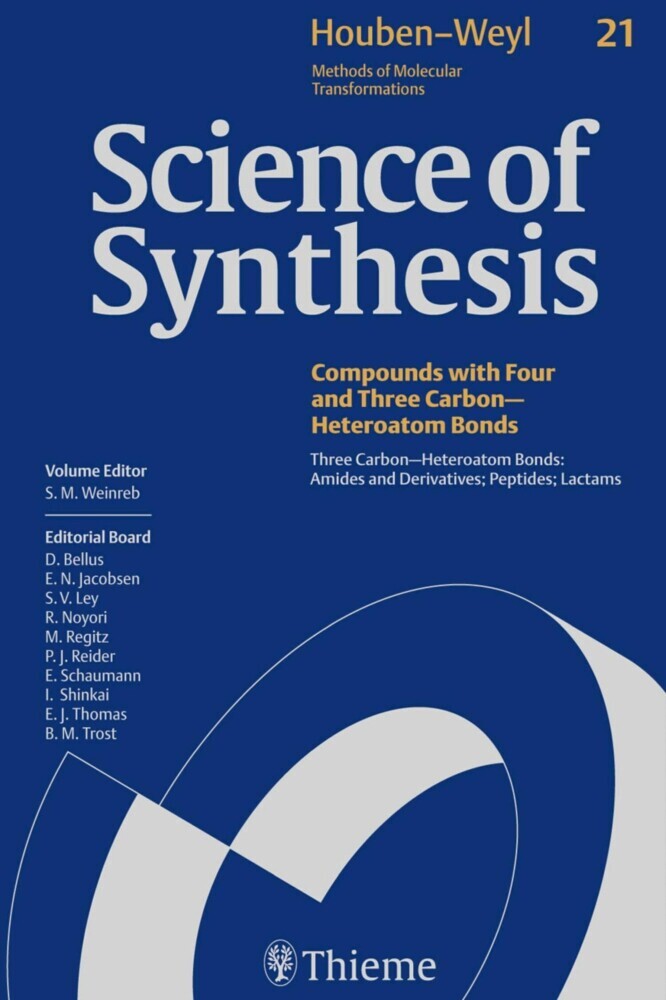Science of Synthesis: Houben-Weyl Methods of Molecular Transformations Vol. 7
Science of Synthesis: Houben-Weyl Methods of Molecular Transformations Vol. 7
Science of Synthesis: Houben-Weyl Methods of Molecular Transformations is the entirely new edition of the acclaimed reference series Houben-Weyl, the standard synthetic chemistry resource since 1909. This new edition is published in English and will comprise 48 volumes published between the years 2000 and 2008.
Science of Synthesis is a quality reference work developed by a highly esteemed editorial board to provide a comprehensive and critical selection of reliable organic and organometallic synthetic methods. This unique resource is designed to be the first point of reference when searching for a synthesis strategy.
- Contains the expertise of presently 400 leading chemists worldwide.
- Critically evaluates the preparative applicability and significance of the synthetic methods.
- Discusses relevant background information and provides detailed experimental procedures
For full information on the Science of Synthesis series, visit the Science of Synthesis Homepage
Series Editors: D. Bellus, S. V. Ley, R. Noyori, M. Regitz, E. Schaumann, I. Shinkai, E. J. Thomas, B. M. Trost, P. J. Reider
Yamamoto Hisashi
1;Science of Synthesis - Volume 7: Compounds of Groups 13 and 2 (Al, Ga, In, Tl, Be...Ba);1 1.1;Title page;3 1.2;Imprint;5 1.3;Preface;6 1.4;Volume Editor's Preface;8 1.5;Overview;10 1.6;Table of Contents;14 1.7;Introduction;38 1.8;7.1 Product Class 1: Aluminum Compounds;42 1.8.1;7.1.1 Product Subclass 1: Zerovalent Aluminum and Its Alloys;42 1.8.1.1;Synthesis of Product Subclass 1;42 1.8.1.1.1;7.1.1.1 Method 1: Aluminum Treated with Mercury(II) Chloride;42 1.8.1.1.2;7.1.1.2 Method 2: Aluminum Treated with Potassium Hydroxide in Methanol;44 1.8.1.1.3;7.1.1.3 Method 3: Aluminum as Reductant for Titanium(IV) Chloride;44 1.8.1.1.4;7.1.1.4 Method 4: Aluminum--Lead System;45 1.8.1.1.5;7.1.1.5 Method 5: Aluminum--Vanadium--Chlorosilane Combination;46 1.8.1.1.6;7.1.1.6 Method 6: Aluminum--Nickel(II) Chloride System;47 1.8.1.1.7;7.1.1.7 Method 7: Aluminum Activated by an Aqueous Fluoride Salt;47 1.8.1.1.8;7.1.1.8 Method 8: Aluminum--Cobalt Alloy;48 1.8.1.1.9;7.1.1.9 Method 9: Aluminum--Nickel Alloy;49 1.8.1.1.10;7.1.1.10 Method 10: Activated Aluminum by Reduction of Aluminum Halides;49 1.8.1.1.11;7.1.1.11 Method 11: Aluminum--Tin(II) Chloride System;50 1.8.2;7.1.2 Product Subclass 2: Aluminum Hydrides;52 1.8.2.1;Synthesis of Product Subclass 2;53 1.8.2.1.1;7.1.2.1 Method 1: Lithium Aluminum Hydride from Lithium Hydride and Aluminum Trichloride;53 1.8.2.1.2;7.1.2.2 Method 2: Magnesium and Calcium Aluminum Hydride from Lithium or Sodium Aluminum Hydride;54 1.8.2.1.3;7.1.2.3 Method 3: Lithium Aluminum Hydride with Copper Salts;55 1.8.2.1.3.1;7.1.2.3.1 Variation 1: Lithium Aluminum Hydride with Copper(II) Chloride for Reductive Fission of Sulfides;55 1.8.2.1.3.2;7.1.2.3.2 Variation 2: Lithium Aluminum Hydride with Copper(I) Iodide for Conjugate Reduction of a,ß-Unsaturated Carbonyl Compounds;55 1.8.2.1.3.3;7.1.2.3.3 Variation 3: Lithium Aluminum Hydride with Copper(I) Cyanide for 1,4-Reduction of an Oxaspirene;56 1.8.2.1.4;7.1.2.4 Method 4: Lithium Aluminum Hydride with Titanium Compounds;57 1.8.2.1.4.1;7.1.2.4.1 Variation 1: Lithium Aluminum Hydride with Titanium(III) Chloride for Reductive Self-Coupling of Carbonyl Compounds;57 1.8.2.1.4.2;7.1.2.4.2 Variation 2: Lithium Aluminum Hydride with Titanium(IV) Iodide for the Preparation of a,a-Disubstituted Acetic Acids from Ketones;57 1.8.2.1.4.3;7.1.2.4.3 Variation 3: Lithium Aluminum Hydride with Dichlorobis(.5-cyclopenta-dienyl)titanium(IV) for the Dehydroxylation of Allylic Alcohols;58 1.8.2.1.4.4;7.1.2.4.4 Variation 4: Lithium Aluminum Hydride with Titanium(IV) Chloride for the Deoxygenation of N-Oxides;59 1.8.2.1.4.5;7.1.2.4.5 Variation 5: Lithium Aluminum Hydride with Titanium(IV) Chloride for the Preparation of Lithium Alkylaluminates from Alkenes;59 1.8.2.1.5;7.1.2.5 Method 5: Lithium Aluminum Hydride with Various Metal Chloride Salts for the Catalytic Reduction of Alkynes, Alkenes, and Aryl and Alkyl Chlorides;60 1.8.2.1.6;7.1.2.6 Method 6: Lithium Aluminum Hydride with Nickel Compounds for Desulfurization Reactions;62 1.8.2.1.7;7.1.2.7 Method 7: Lithium Aluminum Hydride with Zirconium Compounds;63 1.8.2.1.7.1;7.1.2.7.1 Variation 1: Lithium Aluminum Hydride with Zirconium(IV) Compounds for Hydroaluminations of Alkenes;63 1.8.2.1.7.2;7.1.2.7.2 Variation 2: Use of Lithium Aluminum Hydride for the Preparation of Bis(.5-cyclopentadienyl)(hydrido)zirconium(IV) Complexes;63 1.8.2.1.8;7.1.2.8 Method 8: Lithium Aluminum Hydride with Boron Trifluoride;64 1.8.2.1.9;7.1.2.9 Method 9: Lithium Aluminum Hydride with Iron Compounds;65 1.8.2.1.9.1;7.1.2.9.1 Variation 1: Lithium Aluminum Hydride and Dodecacarbonyltriiron(0) for the Reductive Dimerization of a,ß-Unsaturated Ketones;65 1.8.2.1.9.2;7.1.2.9.2 Variation 2: Lithium Aluminum Hydride and Iron(II) or Iron(III) Chloride for Dehalogenation or Detosylation;66 1.8.2.1.10;7.1.2.10 Method 10: Lithium Aluminum Hydride with Manganese(II) Chloride for the Allylation of Aldehydes or Ketones;66 1.8.2.1.11;7.1.2.11
Bellus, Daniel
Yamamoto, Hisashi
| ISBN | 9783131717719 |
|---|---|
| Artikelnummer | 9783131717719 |
| Medientyp | E-Book - PDF |
| Copyrightjahr | 2014 |
| Verlag | Georg Thieme Verlag KG |
| Umfang | 802 Seiten |
| Sprache | Englisch |
| Kopierschutz | Digitales Wasserzeichen |

